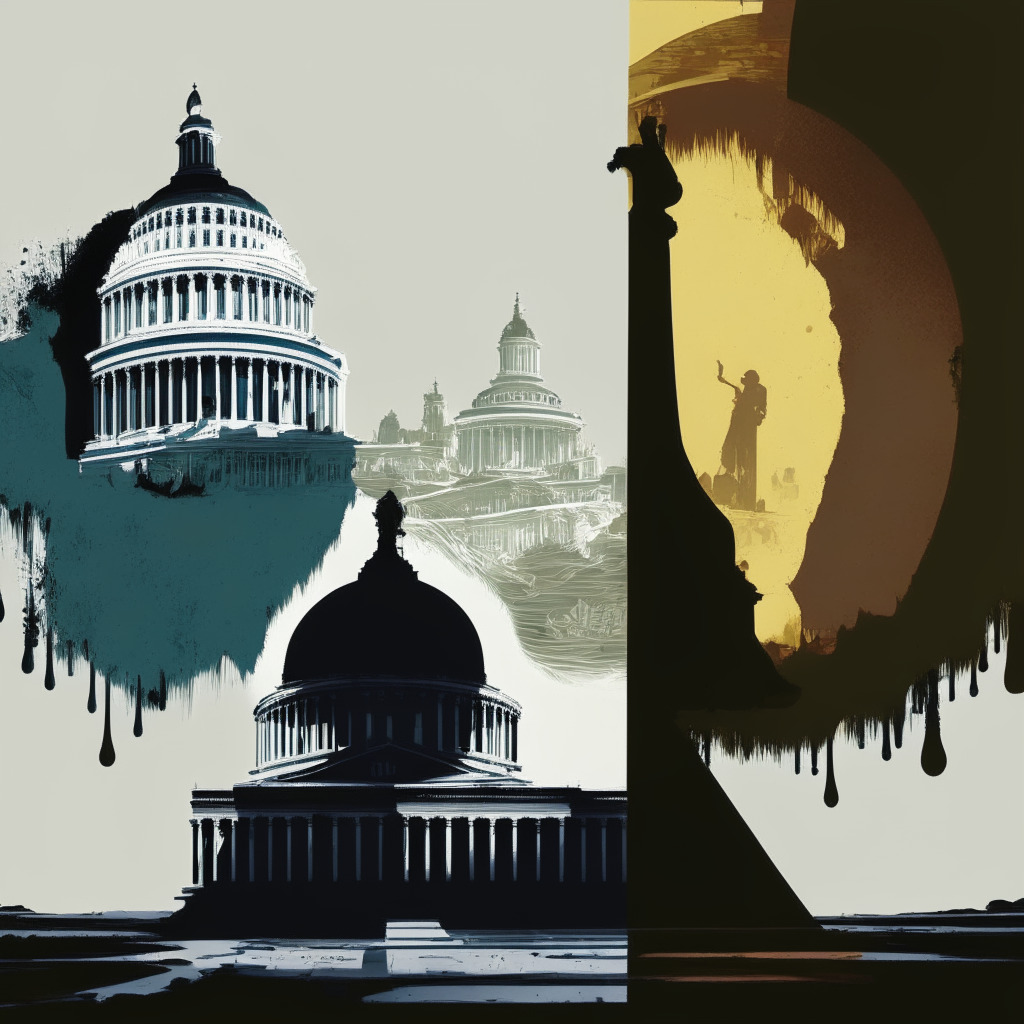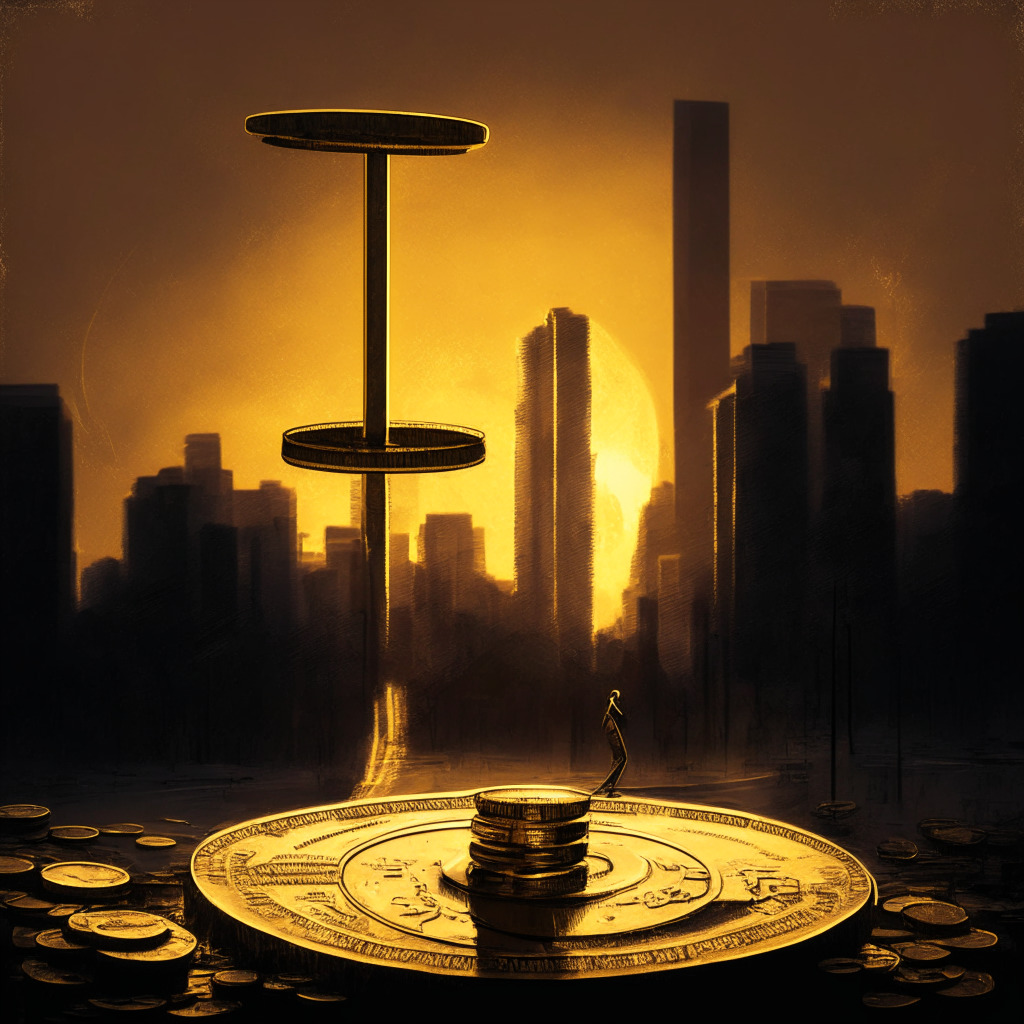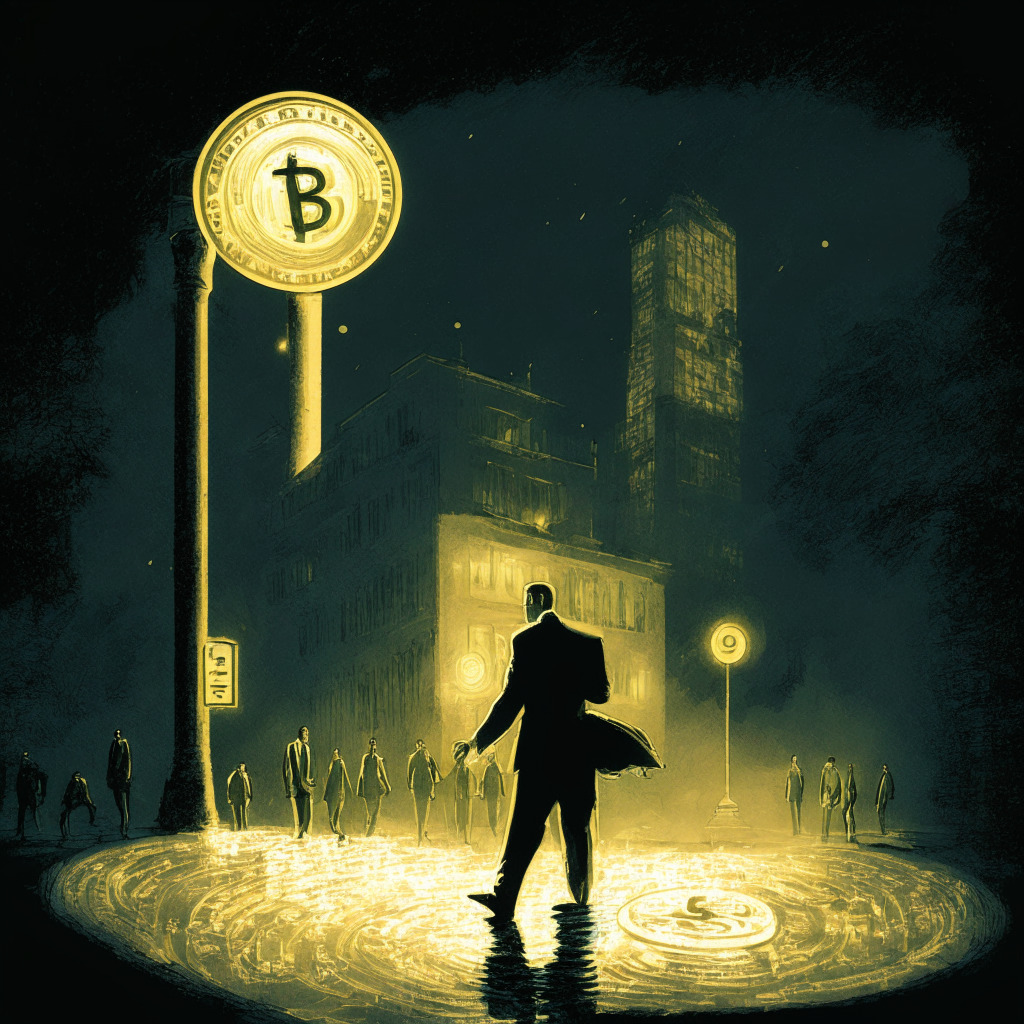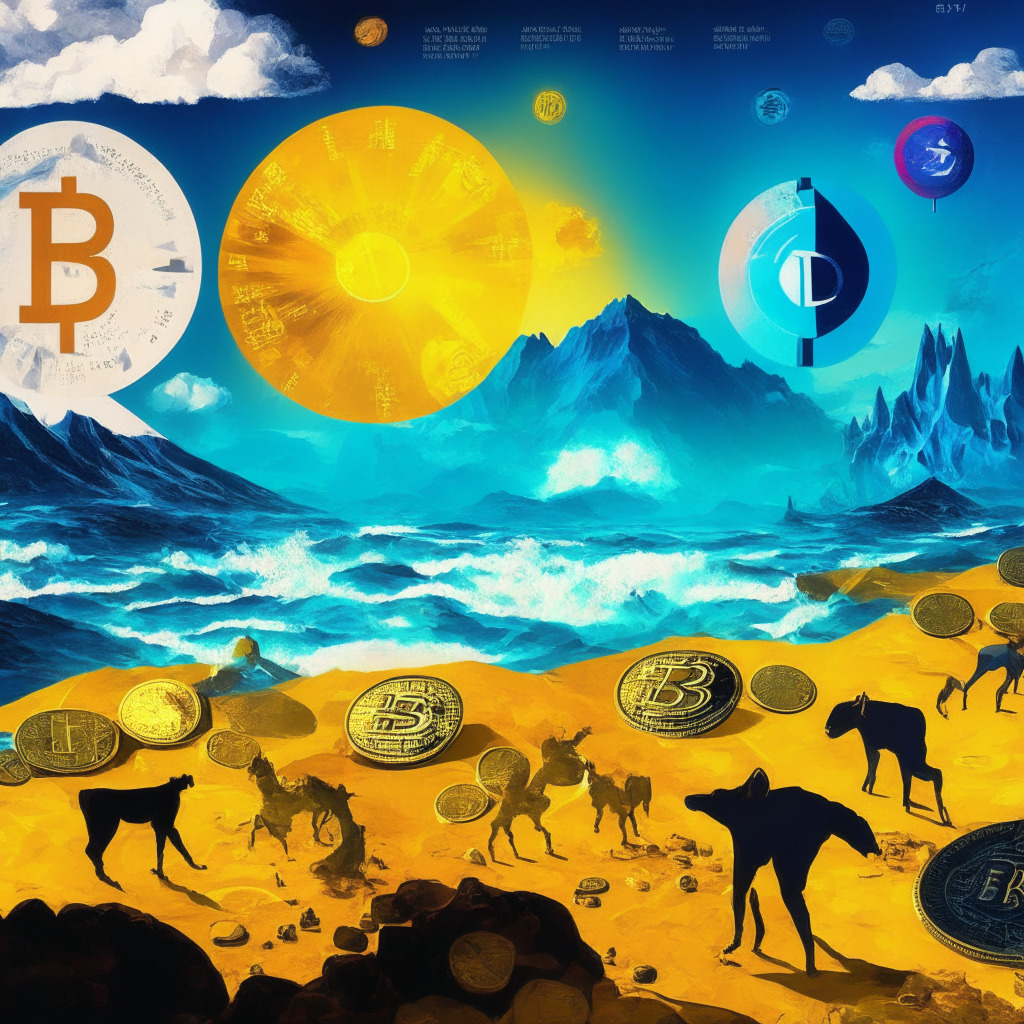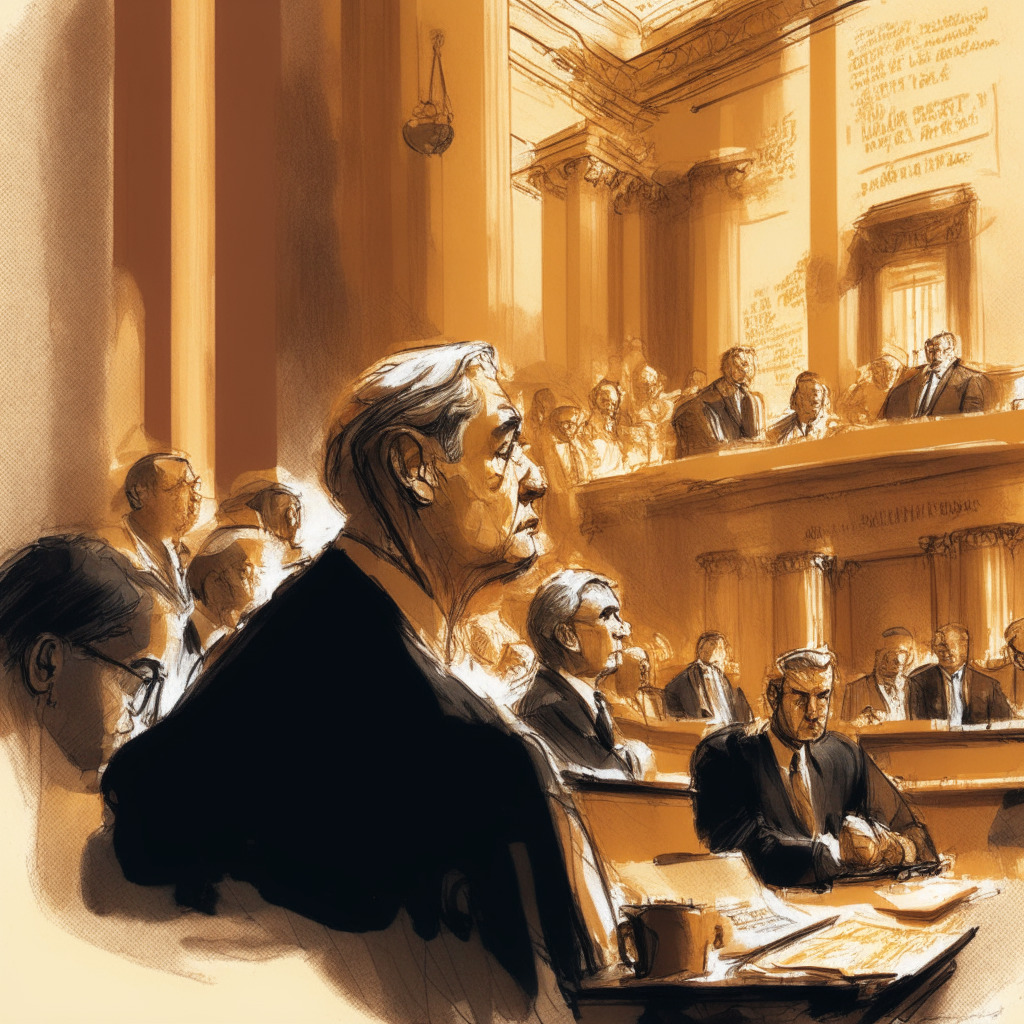Coinbase CEO, Brian Armstrong, revealed that Binance traded a chunk of its USDC for another stablecoin. This reflects Binance’s increasing interest in newer stablecoins, despite market risks. With its turn towards the lesser-known FDUSD, Binance’s unusual decision indicates a notable trend within the crypto markets.
Search Results for: stablecoins
Stablecoins: A Counterbalance Against De-dollarization and Boost for US Global Standing
“U.S. regulated fiat-backed stablecoins could counterbalance the weakening dominance of the dollar due to de-dollarization efforts by BRICS and emerging markets. Pegged to the U.S. dollar, these digital tokens merge traditional currency stability with cryptocurrencies’ technological strength.”
Decoding CZ’s Take on Stablecoins: Bridging Transparency and Regulatory Challenges
Binance CEO Changpeng Zhao discussed the complexities and regulatory challenges of Stablecoins, amid growing uncertainties around major Stablecoins like Tether. To counter these uncertainties, Binance is fostering partnerships with varied Stablecoin projects and creating region-specific algorithmic Stablecoins, balancing innovation, regulatory compliance, and risk management in the evolving Stablecoin ecosystem.
US Defense Bill’s Impact on Stablecoins: A Compliance Conundrum in the Offing
The U.S. national defense bill could pose compliance challenges for stablecoins like USDC due to proposed Know Your Customer (KYC) and anti-money laundering (AML) measures. The standards may affect stablecoin holders’ identities and impact USDC’s market cap. The bill’s implications could also affect Coinbase, which derived almost 27% of its net revenue from USDC in Q1 2021.
Stablecoins: A Safer Alternative to Banking or a Risky Proposition?
“Brendan Malone, a former Federal Reserve Board analyst, posits stablecoins might pose less risk than traditional bank deposits. Stablecoins, such as Tether’s USDT and Circle’s USD Coin, offer an efficiency-laden alternative to traditional banking, given its insulation from the typical crypto volatility.”
Stablecoins Disrupting Financial System: Are They Really Riskier than Bank Deposits?
According to former Federal Reserve Board analyst, Brendan Malone, stablecoins are less risky than bank deposits and are not akin to money market funds. He argues that stablecoins, backed by fiat currencies and typically short-dated Treasuries, do not pose similar risks as banks due to the absence of mismatches between short-term liabilities and long-term assets. Regulating stablecoins similarly to traditional financial entities could, however, limit competition and increase market dominance.
Stablecoins Legislation Deadlock: A Battle for Supervision and Inclusion in Crypto-World
“The debate in the House over stablecoins legislation reveals the significance of addressing regulatory ambiguity in the digital asset sector. Despite disagreements, legislators acknowledge the importance of stablecoins, and the outcome of this issue will inevitably influence its future regulation.”
Pacific Paradise or Peril: Palau’s Intriguing Journey into Blockchain and Stablecoins
The Pacific island nation of Palau is testing its own dollar-pegged stablecoin, with considerable assistance from Ripple. The project’s future is contingent upon a report to the nation’s government, deciding if the initiative will be fruitful long-term. Palau is also exploring blockchain technology in digital residency applications and plans to establish its own cryptocurrency exchange.
Stablecoins’ Struggle for Dominance Amid Market Turbulence: A Chronicle of Ups and Downs
The recent downturn in crypto markets has led to a decreased dominance of stablecoins, with the Pax Dollar (USDP) facing a significant decrease. Despite an overall reduction in the stablecoin market, there has been a surprising increase in stablecoin trading volumes. This turbulence in the crypto space continues to influence the stablecoin market.
Rise of Stablecoins: Will They Topple the US Dollar’s Dominance in the Digital Age?
“Jeremy Allaire, the CEO of Circle, warns of the risk to the US dollar’s status as the leading global reserve currency in the face of rising stablecoins. Allaire emphasizes the need to regulate stablecoins and develop trust in digital dollars, as cryptocurrency is poised to revolutionize the payment system, potentially saving a trillion-dollar economic toll from traditional financial system inefficiencies.”
The Rise and Uncertainty of Centralized Stablecoins: Balancing Transparency and Dependence
Centralized stablecoins, stabilizing their price against another asset like the U.S dollar, account for 75% of all transactions on centralized crypto exchanges, with TrueUSD (TUSD) and Tether’s USDT taking significant shares. However, amid growth, controversies and transparency issues pose challenges and risks, demonstrating the crypto market’s vulnerability. The future of such stablecoins depends on addressing these vulnerabilities and embracing transparency.
Stablecoins: A Tethered Threat or Necessary Innovation? Unwinding the Global Debate
“Stablecoins potentially infringe on nations’ policy sovereignty and present more benefits to robust economies like the US and Europe. They pose an economic and socio-political challenge, and also risk amplifying the dollar’s power. International sentiment points towards a need for stricter stablecoin regulation to ensure financial stability.”
Regulation Revolution: How MiCA and Euro Stablecoins Could Reshape the Crypto Landscape
The Markets in Crypto Assets (MiCA) regulation aims to introduce regulatory transparency to global crypto markets, including the creation of a European stablecoin. Amidst concerns over the U.S. economy and dollar-dominated transactions, the crypto market sees Euro-backed stablecoins as a critical alternative. This could potentially challenge the U.S. dollar’s dominance in digital asset markets.
Navigating the Regulatory Terrain for Stablecoins: Promising Future vs. Consumer Safety Debate
“The European Banking Authority is urging an early adaptation of guidelines for managing stablecoins, ahead of mandatory regulations due next year. This includes understanding and implementing the EU-approved MiCAR framework’s measures for good governance and consumer protection. These preemptive actions are designed to reduce potential risks and facilitate effective consumer protection in the rapidly evolving stablecoin market.”
Global Digital Currency Race: Stablecoins Threat or CBDCs Safety?
“The race for global digital currency dominance has stablecoins and Central Bank Digital Currencies (CBDCs) in the lead. However, Rabi Sankar, Deputy Governor of the Reserve Bank of India, warns that stablecoins could pose significant policy sovereignty risks for certain nations.”
Navigating the Roaring Tides: The Confluence of Stablecoins, CBDCs and China’s Economic Strategy
Jeremy Allaire, CEO of Circle, suggests that a Yuan-backed stablecoin could aid Beijing’s goal of widespread acceptance of the Chinese Yuan. However, he notes that strict economic policies and capital controls could be potential obstacles. Allaire highlights that despite the challenges, stablecoins have proven beneficial for overseas monetary remittances, particularly for Chinese firms.
Navigating the MiCA Legislation: Impacts on Private Stablecoins and the Future of Crypto Regulation
The European Union enacted the Markets in Crypto-Assets (MiCA) legislation, sparking controversy with a daily 200 million euros transaction cap for private stablecoins. This is meant to protect investors from large-scale stablecoin failures which could impact traditional financial systems. However, critics argue it could stifle innovation within the crypto landscape.
Former Goldman Sachs Executive Joins Circle’s Board: What This Means for Future of Stablecoins
Former Goldman Sachs executive, Craig Broderick, has joined the Board of Directors of Circle Internet Financial, creator of the USDC stablecoin. Broderick’s substantial financial experience is expected to guide Circle in robust risk management, crucial in the evolving crypto environment. Concurrent with this, former CFTC chair Heath Tarbert has been recruited as Chief Legal Officer, marking a strategic push for regulatory clarity.
Crypto Markets: Gains, Losses, and Stablecoins – Navigating the Volatile Landscape
Cryptocurrency markets exhibit notable volatility, presenting both significant gains and losses. This snapshot highlights the contrasting performance of various digital assets, emphasizing the importance of caution and due diligence when participating in the unpredictable world of digital assets.
Circle’s Ties to Collapsed SVB: Stablecoins’ Resilience and Lessons in Risk Management
The now-collapsed Silicon Valley Bank (SVB) reportedly had Circle as its single largest asset-weighted customer, holding $3.3 billion at the time of collapse. The incident raises questions about stablecoins like Circle’s USDC and underlines the importance of due diligence and contingency planning in the crypto industry.
Stablecoins, CBDCs, and the Future: Balancing Innovation, Privacy, and Regulation
Federal Reserve Chair Jerome Powell addressed digital assets, stablecoins, and central bank digital currencies (CBDCs) during a recent House Financial Services Committee. Stablecoins offer efficient, cost-effective payments with stability, but concerns over privacy and regulation arise. Powell suggests CBDCs would be intermediated through banks, not individuals’ accounts, sparking ongoing debates on financial institutions’ role and the future of digital currencies.
Fed Chair Powell Pushes for Central Bank-Regulated Stablecoins: Innovation vs Security Debate
Federal Reserve Chair Jerome Powell emphasizes the need for a strong federal presence in stablecoin supervision during a monetary policy hearing, asserting the central bank’s crucial role in oversight. As the crypto landscape evolves, creating a regulatory framework that balances stablecoins’ potential benefits and investor protection is vital for future success.
SEC Crackdown on DeFi and Stablecoins: Analyzing Pros, Cons, and Market Implications
The SEC is potentially targeting decentralized finance (DeFi) and stablecoins, including Tether (USDT) and USD Coin (USDC), in its enforcement crackdown, according to a Berenberg report. Stablecoins, essential to the DeFi ecosystem, have raised national security concerns due to weak sanctions and money laundering controls. The SEC aims to weaken DeFi’s capacity to rival regulated exchanges and lenders.
SEC Crackdown on Stablecoins and DeFi: Impact on Market and Bitcoin’s Rising Dominance
The U.S. SEC may soon target stablecoins and DeFi protocols in its crackdown on the crypto industry, potentially impacting Coinbase’s revenue from USDC interest income, according to Berenberg’s research report. However, Bitcoin could emerge as a beneficiary, shifting focus toward Bitcoin-centric investments and companies.
Binance.US Market Share Plummets: Regulatory Scrutiny’s Impact on Exchanges and Stablecoins
Binance.US has experienced a decline in trading volume share, dropping to 4.35% amid legal challenges and increased regulatory scrutiny. Meanwhile, Binance-branded stablecoin Binance USD (BUSD) has lost popularity with its market cap falling from $5.5 billion to $4.3 billion.
Crypto Regulation Wars: Terraform Labs, Stablecoins, and the Battle for Blockchain’s Future
Terraform Labs co-founder and former CFO face prison sentences and extradition due to fraud charges, highlighting challenges and regulatory uncertainties in the cryptocurrency industry. As stablecoins gain traction, striking a balance between fostering innovation and protecting investors is a pressing challenge for global regulators.
BUSD Market Cap Plummets: The Impact of Regulatory Scrutiny on Stablecoins
Binance-branded BUSD stablecoin’s market cap has dropped to $4.3 billion, falling behind DAI, due to regulatory actions against Paxos, the issuer of BUSD. Stricter regulatory measures led Paxos to end its relationship with Binance, impacting the stablecoin’s market position.
MakerDAO’s DAI Rate Hike & Shift to Real-World Assets: Implications for Stablecoins
MakerDAO approved a DAI Savings Rate increase from 1% to 3.49% and rearranged DAI stablecoin’s backing assets. By investing in real-world assets like short-term U.S. government bonds, Maker aims to bridge cryptocurrency with real-world assets, impacting other stablecoins’ market standing like USDP and GUSD.
Heath Tarbert Joins Circle: A Regulatory Game Changer for Stablecoins and Crypto Markets
Circle hires Heath Tarbert as Chief Legal Officer in order to leverage his expertise amid regulatory challenges. Circle’s CEO believes Tarbert’s background in international organizations and governments will prove crucial for building durable relationships while advocating for comprehensive stablecoin legislation to restore confidence in digital assets.
Stablecoins in a Shifting Regulatory Landscape: USDC’s Potential Advantage Over Rivals
Amidst the recent U.S. regional banking crisis, Circle, the company behind stablecoin USDC, anticipates a more optimistic future. As U.S. lawmakers draft proposals for clear crypto market regulations, Circle’s CEO believes compliance will give USDC a competitive edge over rivals.
Crypto Market Favors Stablecoins and Bitcoin: Analyzing Uniswap & Futures Trading Trends
On-chain data indicates market participants are avoiding risk, seeking shelter in stablecoins and Bitcoin as the crypto market approaches a decisive move. The current trends show capital rotation away from high-risk altcoins toward low-risk assets, suggesting an increased focus on safety.
FASB Crypto Asset Reporting: Seeking Clarity on Stablecoins, Wrapped Tokens & NFTs
As the FASB’s comment period for proposed crypto asset reporting changes nears its end, companies like Kraken, Ernst and Young, and BlockFi seek further guidance on stablecoins, wrapped tokens, and NFTs, while Grayscale Investments calls for accurate reporting of crypto assets.






